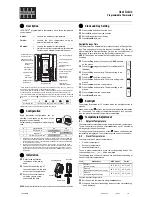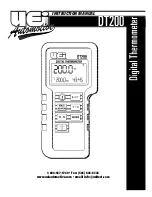
11
BACNET
CONTROL
BACNET
S-Bus
S-Bus
CS8500
CS8500
RT
U
RT
U
Figure 8. BACnet and CS8500
CS8500 Occupancy Override
• Rooftop units use occupied or unoccupied set
points based on the occupancy status supplied
by the BACnet front-end.
• The user has the option to force the system into
occupied status using the CS8500.
• When the user overrides occupancy at the
CS8500, it communicates the same to M3 unit
controller.
• Upon receiving this information, the M3 unit
controller starts an override timer and uses the
occupied set points until the timer expires.
• The CS8500 also remains in the occupied mode
as long as the override timer is active.
• While the timer is active, if BACnet queries the
M3 unit controller, it will be informed that the
rooftop unit is using the occupied set points.
• When the timer expires, both the M3 unit
controller and CS8500 reverts to the occupancy
status provided by BACnet.
BACnet Canceling Override
When the user changes the set point or occupancy
mode at the CS8500, it puts the M3 unit controller
into override mode. The BACnet front-end has the
option to cancel the override timer at any time by
sending a value of
3
to BACnet Analog Object 103.
When the timer is canceled, the rooftop units and
CS8500 returns to using the occupancy status or set
points provided by the BACnet front-end.
Sensor Inputs
The M3 unit controller can be configured to use tem
-
perature, relative humidity and/or CO
2
provided by
the CS8500.
NOTE:
Occupancy sensor input from the CS8500
cannot be utilized in this mode.
M3 Unit Controller Setup
BACnet compatibility with the M3 unit controller
requires firmware version 08.03.0120 or higher. To
configure the M3 unit controller to work with the
CS8500 use the following procedure:
1. Go to
MAIN MENU
>
SETTINGS
>
RTU
OPTIONS
>
EDIT PARAMETERS
. Edit
parameter 385 and set to 1.
NOTE:
Modifying 385 to 1 allows both the CS8500
and M3 unit controller to co-exist.)












































